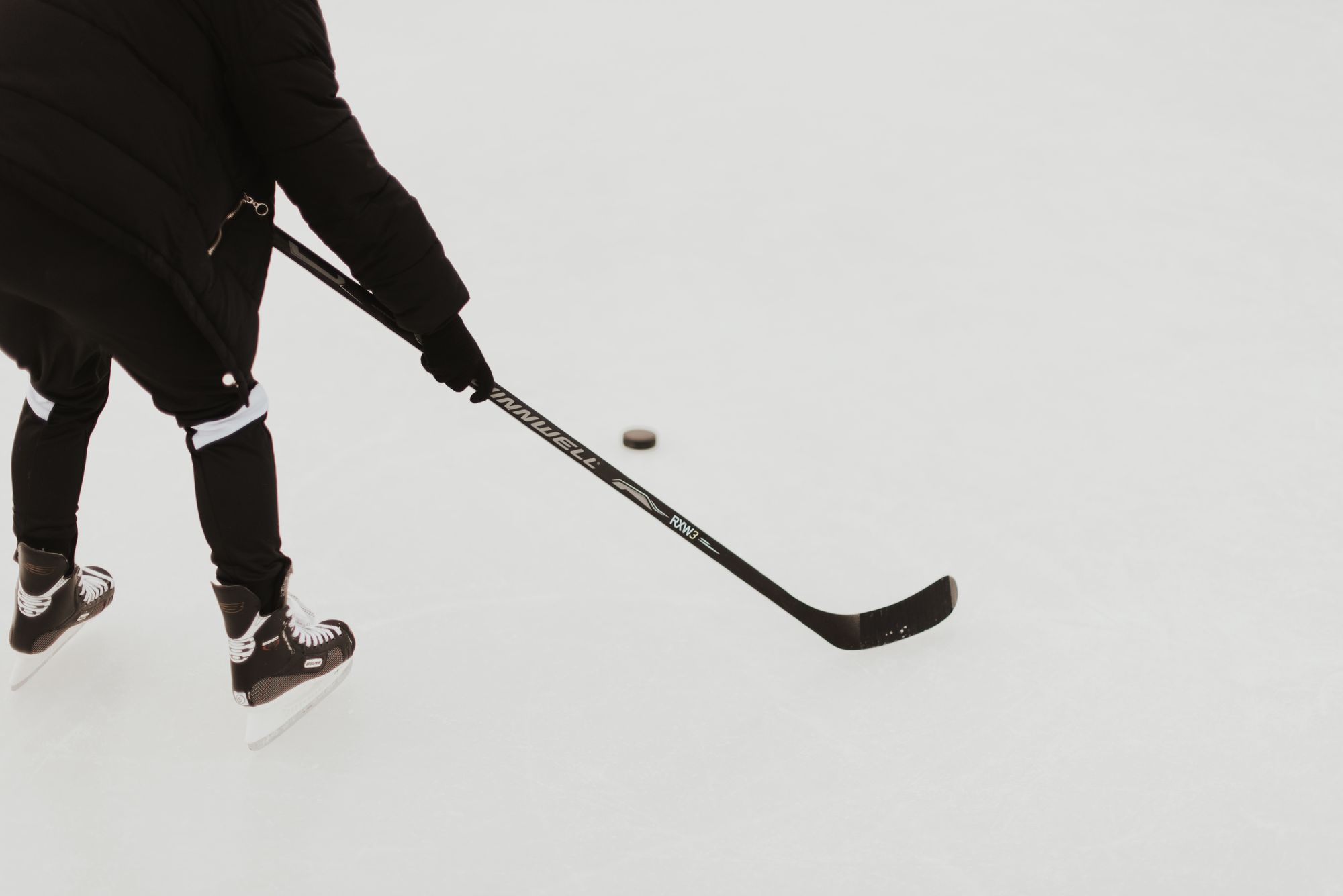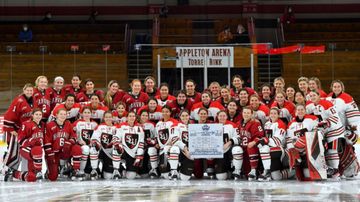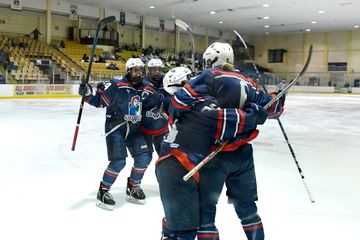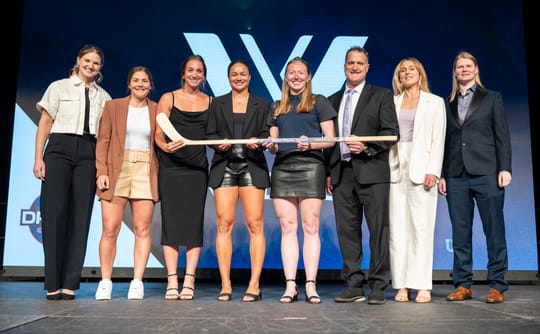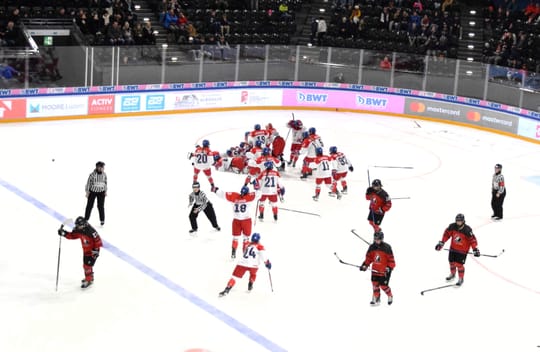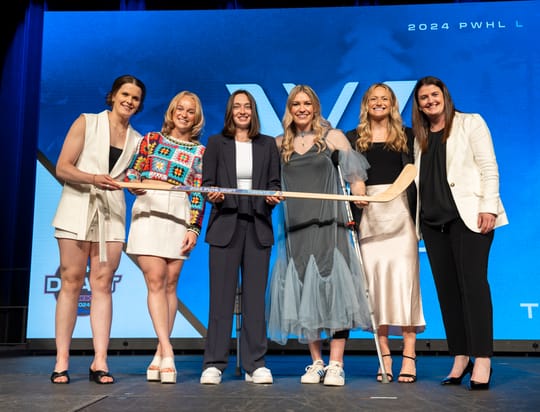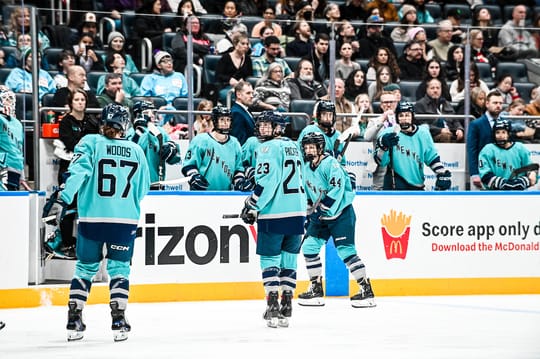The revelations from the Jenner & Block report about the Chicago Blackhawks' failure to intervene when then-video coach Brad Aldrich sexually assaulted Kyle Beach and an intern in 2010 have rocked the hockey world, and rightfully so. The details in the report are damning to the front office leadership of the Blackhawks, but, as many are realizing, they are also damning to hockey culture in general and the NHL writ large.
Kyle Beach was failed by his coaches, by the Blackhawks organization, by his teammates, by the NHLPA, and by NHL leadership. Those failures continue today, as the NHL levied a slap-on-the-wrist fine to the Blackhawks of just $2 million. Commissioner Gary Bettman has avoided discussing accountability for what happened to Beach; he allowed Joel Quenneville, Stan Bowman, and other members of leadership to resign their positions and left the door open for future employment with the NHL provided that they meet with Bettman to discuss it. His press conference on November 1 was widely panned by longtime media members as embarrassing and craven.
Many people are finally starting to catch on that the National Hockey League, which purports to be the highest-level professional league in the world, is not exactly setting a gold standard of professionalism – including lifetime fans who have made rooting for an NHL team a major part of their lives. You don't have to be a Blackhawks fan or Chicago native to be affected by this story, because it shows the real effects of the revolving door in NHL front offices and hockey jobs in general. The same people get tapped for the same jobs around the league, and they bring with them long histories in the sport. We know from experience and from reported work that these long histories can often involve covering up sexual abuse (as in the Aldrich case), cavorting with known domestic abusers and rapists, harassing women, using racial slurs, perpetuating homophobia and transphobia, and all-around general misogyny and toxic masculinity. Game Misconduct by Jashvina Shah and Evan F. Moore, which just came out this October, draws a broad outline of these serious problems in hockey. Rarely do we see it spelled out in public, but the conditions are ripe for a potential reckoning in the sport. It is a shame that it has taken so long.
A notable part of the Jenner & Block report is the recollection by Beach that homophobic slurs were directed at him while attending training camp with the Blackhawks in September 2010, several months after the May 2010 assault by Aldrich. Another player identified in the report as Black Ace 1 recalled being called homophobic slurs by other players on the team in 2014. These are just two players, talking about one team, but the in-depth accounting of the Jenner & Block report serves to underscore the credibility of their recollections. The fact that these incidents occurred openly at practices and training camp also indicates that they were likely not anomalies – that this was an environment where such behavior was tolerated or at least ignored by team coaching staff. We have seen further incidents on broadcast television in the intervening years where players have used homophobic slurs with cameras and microphones trained on them.
It is obvious that homophobic language is generally tolerated in hockey culture. The rise of organizations like You Can Play has brought attention to the impact of homophobic language. But what, if anything, has been done to address the underlying culture that incubated this norm in the first place? The stigma that Beach dealt with as a survivor of sexual abuse had a commingling factor in that he was victimized by another man who identified as gay. In light of Beach going public with his identity as well, there have also been numerous comments that because Beach was bigger physically than Aldrich, he should have been able to fight him off, including from at least one long-time NHL executive, according to Rick Westhead.
Struggling with this one.
— Rick Westhead (@rwesthead) October 30, 2021
Even after the events of this week, a long-time NHL executive reached out re Kyle's story and said to me, "I just don't understand how a little guy like Brad can molest an 6' 4" NHL player."
Abuse involves exploiting a power imbalance.
Educate yourself.
Everyone has been rightfully outraged about this story, but Westhead has been the exception among NHL reporters in that he covered this story relentlessly and has made it his beat to uncover inequities, injustices, and abuse in the National Hockey League. Westhead has also, for many years, provided focused coverage on the failures of the NHL to address repeated head injuries that have led to long term physical and mental health complications for current and former hockey players. Westhead doesn't do general NHL reporting the same way many reporters do – his Twitter timeline and recent body of work are entirely focused on more serious and uncomfortable topics, like sexual abuse, CTE, and the business side of hockey. Westhead leads by example in this regard and more or less stands alone among national NHL reporters for major outlets in the United States and Canada in working this way. Everyone who is writing about the Blackhawks scandal, myself included, owes him a great deal for bringing these issues to light and for providing stellar, empathetic, sensitive, and detailed reporting.
Most of the rest of us who write about hockey have to be generalists, and it can be hard to balance providing general news (such as game stories and evaluating players' on-ice performance) with more serious discussions of sport. Part of the Victory Press' mission is that we try to do both, and prioritize the latter over the former. This can lead to uncomfortable conversations with sources and certainly makes the job of covering a sport more emotional and less fun. But it's certainly doable for us, and it doesn't seem outside of the realm of possibility that other national reporters might be able to provide more general coverage while not actively providing cover for bad actors in the NHL and hockey space more broadly.
All of this is to say that the litany of feature articles over the last few years about "Hockey is for Everyone" and LGBTQIA inclusion in the NHL have essentially been disingenuous PR for the league. The NHL has demonstrably done nothing substantive in its long-term or recent history to address or investigate the underlying cultural issues that have made hockey such a toxic and insular sport. Many of the same reporters who have written these borderline fantastical pieces have gone on to cover the Blackhawks scandal.
The theme of these articles is consistent: that an out, gay player would be welcomed across the league, and small gestures like tweets, participating in Pride parades, or involvement in organizations like allegedly YCP bear this out. But the reality is that LGBTQIA people are still marginalized in society and are more likely to be victims of sexual assault as well as other violent crimes compared to their heterosexual and cisgender counterparts. These statistics skyrocket for LGBTQ people of color.
The question has never been whether that player coming out would have some individuals in the NHL who support them. The question has been whether the NHL has willingness to holistically support not just that first player, but the many other players who would, in a healthy and inclusive culture, be able to follow. To those of us who have observed the NHL's behavior towards marginalized people in general for many years, it's been pretty obvious that the answer is no. The proverbial "first openly gay NHL player" would likely serve a variety of purposes for the league and its fans, but would not be free to just be themselves. That player would become a consumable product just as any other player in the league, with the added burden of being the living, breathing example of just how "ready" the NHL was for this moment.
The NHL has prepared for this moment in the press. Back in 2012 at the launch of YCP, "If you can play, you can play" may have felt like a decent-enough first step. But it has been nine years since then, and very little of substance has transpired in those nine years culturally for the NHL. The language around inclusion has changed, and the NHL has (at times awkwardly) adapted to using the "correct" language around these issues, but the true cultural change has yet to occur. It begs the question as to whether a cultural change was ever desired, or if, as is likely the case, the NHL is looking to obtain a gay player as a commodity and a shield against future accusations of discriminatory behavior.
The way the NHL is handling what happened to Kyle Beach, which has a notable component of homophobic verbal abuse, further illustrates the lack of sincerity in these overtures. Mainstream sports publications have participated willingly in this song and dance by the NHL and YCP to show that the NHL is "ready" for its first out gay player. Which is why it is so frustrating to see these same reporters who bought into the rose-colored view of "Hockey is for Everyone", with a plucky if obligatory dash of cautious optimism, express surprise and grief at the Brad Aldrich scandal. It is of course worthy of grief. But the surprise belies the willful ignorance that was required to buy in to the NHL's performance of "Hockey is for Everyone" in the first place.
Katie Strang's piece for The Athletic in 2019 is perhaps the most galling. Titled "Coming out: What will it take for the first gay player to come forward?", the piece puts little forward of any evidentiary value to show that the NHL is ready to be an inclusive environment for any marginalized person. The main people who are directly quoted are Patrick Burke, Dr. Cheryl MacDonald, and Brock McGillis, none of whom worked with the NHL. Brendan Shanahan, president of the Toronto Maple Leafs and former NHL senior vice president, spoke to his own personal acceptance of a future gay NHL player, but at no point did anyone discuss anything systemic being done within the NHL or any one team to create a supportive and inclusive environment.
Strang offers the following inspirational passage, on faith alone:
The demographics of the NHL are shifting toward a younger, more socially aware group of players. With that change comes an evolving sense of attitudes, too. But there's ample reason to believe even those clinging to the old-school, bare-knuckles ethos of eras past would support someone willing to take the risk of coming out, too.
Think about the way toughness, grit and resilience are revered — fetishized, even — within the sport. Now think about what it would take for a player to come out. A number of conversations with players, current and retired, revealed one common theme: they all agreed that anyone willing to take that step would embody these qualities, in abundance.
Said one:
"I think it would be just about the most courageous thing you could do."
The "ample reason" mentioned here is never explained, unless you accept that YCP, the word of a handful of players, and one potentially friendly executive are reason enough. If the NHL is so ready to be inclusive and welcoming, as suggested in the rest of the article, what would they have to be so brave for? Strang's piece correctly identifies that the NHL does not have an out, gay player and that there are reasons why this hasn't happened yet, but she stops short of identifying any actual cause for this cultural climate. Players "don't want to be a distraction" and are conditioned to use homophobic and misogynistic language to describe weakness. Okay, cool. But why?
As Jashvina Shah wrote at Fansided about the Blackhawks scandal: "There needs to be a culture shift entirely, which can only happen if leadership is willing to change." The culture is perpetuated because the people in power have not been interested in fundamentally transforming hockey space into something more inclusive. The NHL and other hockey organizations are purely reactive, quick to identify and denounce harmful behaviors and practices but unwilling to name their underlying causes. The situation described by Strang, where old-school, "gritty" hockey men are in awe of the toughness and bravery of a gay player, is a fantasy that hinges on the idea that individual support will lead to systemic changes.
Matt Larkin's 2021 piece in The Hockey News for Sports Illustrated is slightly more critical, but not by much. Larkin speaks to Kristi Allain, an academic in the sociology field, and again, correctly identifies that hockey culture has a deeply rooted problem with conformity:
According to Allain's findings, the very environment the players grow up in preaches a sense of sameness, a specific and masculine way of playing, and it nudges uniqueness to the margins. It's a big reason why queer kids leave the game in droves at young ages, Allain says. "Even the smallest difference in hockey is conceptualized as a problem," she said. "We deal with hockey teams that are so tied to players getting along, players being the same, that are so resistant to any kind of difference including different friends and interests outside of the leagues. So I was really surprised, when interviewing kids in the CHL, that those who had different interests like music or poetry or reading, different from their teammates, made friends away from the league in secret and often wouldn't talk about them. They knew their coaches and other players wouldn't allow them to have lives really outside the rink. The idea of being an elite hockey player in Canada means that is your life, that is what you do, and it's premised on a kind of conformity. But it starts when players are really, really little.
"If players in men's hockey are afraid to even share their hobbies or secret non-hockey friends, how far of a leap is it to share that they're gay or bisexual?
But again, the piece stops short of properly identifying what exactly kids are afraid of. It doesn't name bullying, retribution, hazing, violence, or abuse. It mentions homophobic language, but frames the use of slurs as something that "just happens", and Cheryl MacDonald, who is also quoted in this piece heavily, implies that players who use slurs in the locker room aren't actually trying to insult someone's sexuality or identity:
"Anti-gay and anti-feminine language might not be offensive to everyone, but there's overwhelming evidence that the more hockey players who are closeted hear it, the less they think it's OK for them to announce that they're gay," MacDonald said. "Because even if their teammates don't mean to insult someone's sexual orientation when they use that kind of language, once you hear it enough, it doesn't necessarily feel like the right time to announce that you're gay."
The implications that these articles make are insidious and misleading, and they always have been. The message given by MacDonald here is that homophobic language is not intended to cause harm, that it's not used with intent of any kind, that it's just a cultural norm. The idea that there are hateful or bigoted people in the NHL is never acknowledged, not even by people who self-describe as allies or advocates.
The message that individuals can work to change their behavior and become more aware of the impact of their words is of course an important one, but it also does a lot of work in these pieces to frame homophobia and other bigotry, and the toxic culture of conformity, as something that happens due to passive actions by individuals. It's framed as carelessness or a lack of awareness due to social conditioning, which is something that can be fixed with education and seminars and conversations. No one in these pieces will cross the line of identifying how this social conditioning around conformity and heteronormativity is allowed to continue and is in fact self-perpetuating and self-duplicating. Obviously, it profoundly impacts the culture of the sport, and as MacDonald implies, it's something that starts at an early age with the way that adults treat kids on hockey teams. But the actors in this situation are never explicitly named.
We know of course that the responsible parties here are adults and leaders in the hockey community. From every single youth coach in mite hockey, to team staff in college and junior leagues, all the way up to Gary Bettman, and including professional players themselves. They are responsible and they have not been held accountable in any way. Nor have they been publicly identified as those responsible for perpetuating a culture of silence and conformity in hockey.
Take this footnote from page 65 of the Jenner & Block report (John Doe refers to Kyle Beach, who had not publicly identified himself yet when the report was released):
John Doe provided us with several 2009 and 2010 emails from [Blackhawks mental skills coach Jim Gary] to John Doe and other Blackhawks players, including, for example, Gary's requests to John Doe to schedule meetings. Certain of the emails from Gary to John Doe included pictures of naked women, crude jokes of an explicit sexual nature, and at least one email which had homophobic undertones. According to Gary, he sometimes used what he regarded as juvenile sexual humor as part of an effort to engage with the young male players in order to encourage them to receive mental skills coaching and counseling from him. Gary stated that he believed that using this type of humor would be effective in forming a connection with John Doe.
This, perhaps better than any other single aspect of the report, illustrates very clearly the type of environment that Kyle Beach was living and working in. In 2019, Jim Gary gave a presentation about his mental health "skills coaching" to an organization for financial analysts in Chicago. During that presentation, he stated that he was the first "mental health therapist" to be employed by any NHL team, and touted his Stanley Cup rings. But according to Rick Westhead, Gary is not a doctor, despite being referred to as "Doc Gary" by players. He does apparently hold a license in the state of Illinois as a licensed clinical professional counselor and is being investigated by the Illinois Department of Financial and Professional Regulation for having allegedly told Kyle Beach that it was his fault that he was sexually assaulted. His talk to the financial analyst group was largely about "visualization", the idea that when you envision something you can create it. It's not a big leap to understand how that mindset contributes to victim blaming. If you are being negatively affected by a violent sexual assault, then you must have envisioned yourself in that situation, or not done a good enough job to envision yourself in a better one. What Jim Gary said and did to Kyle Beach was intentional and in line with his mental health philosophy.
New: The Illinois Department of Financial and Professional Regulation, which licenses certified counsellors, has opened an investigation of "Doc" Jim Gary, who is not an actual doctor, and who allegedly told "John Doe 1" the sexual abuse he suffered was his own fault. https://t.co/2drwbsUIjn
— Rick Westhead (@rwesthead) October 27, 2021
What Jim Gary told Jenner & Block indicates that the use of harmful language that is homophobic, misogynistic, and sexually inappropriate was in fact intentional and part of the environment that he hoped to cultivate with players. While a lot of time has passed since the 2009-10 hockey season and Jim Gary is no longer part of the Blackhawks' mental performance staff, a statement like this is indicative of how endemic bigotry is inside hockey culture, and how leaders in these situations are directly responsible for the norms they enforce and are even conscious of them. None of this happened in a vacuum.
And yet the NHL and YCP keep acting like they have set the table, and they're just waiting for their golden goose to arrive. Larkin's article, which also features Brock McGillis, mentions that the main work to be done is to have junior leagues "catch up to what the NHL is doing", which, several paragraphs later, is basically acknowledged as "box ticking" in terms of "Hockey is for Everyone", Pride events, and YCP involvement. McGillis is heavily pushing an education initiative, as described here:
According to McGillis, the next step to stimulate that leap in allyship is to begin educating people in the game from the bottom to the top and the top to the bottom, meaning at the grassroots, major junior and NHL levels. The best way to do that is to unlock the doors and let the actual experts help out. That means allowing for academics to contribute their ideas and share the findings of their research and countless interviews with closeted members of the queer hockey-playing community [...]
Applying that philosophy, McGillis began working on a project – a big one – in 2020. It involved creating a network of academics providing educational modules that could be reproduced and used by various hockey leagues, from the junior levels to pro leagues.
The modules covered topics such as homophobia, masculinity, misogyny, mental health and many more. The work was outsourced and organized by McGillis, meaning it would be a turnkey operation for leagues using it. But after he worked for months developing the idea with the Ontario Hockey Federation, the organization overseeing all major hockey leagues in the province, the OHF abruptly pulled out, citing COVID-19 complications, in a document sent to all the prospective academics which was obtained by The Hockey News.
What everyone seems to ignore throughout these conversations is that the problems are systemic and ingrained, and that exclusion, bigotry, and abuse often happen with intent. For the Blackhawks front office, the intent was to win a Stanley Cup. For the players who hurled homophobic abuse at Kyle Beach and Black Ace 1, it was to shame them and exclude them for having been victimized by a man.
And of course, this type of language and these attitudes often set the tone for physical abuse that can follow, such as the sexual abuse endured by Beach, violent hazing in junior hockey, and other types of bullying. By not explicitly naming it, the authors of these types of "Hockey is for Everyone" puff pieces have perpetuated and endorsed the same culture of silence. And in fact it is this culture of silence that allows abusers to flourish in hockey at every single level, from youth to adult play. Education can't even begin to address matters of intentionally bigoted violence, targeted abuse, and sexual predation.
Take the recent Boston Globe report about a culture of violent hazing with aggressively racist and homophobic themes that was allowed to flourish over a period of years at Danvers High School in Massachusetts. There have been many reports like this and there will be many more, and yet each incident is framed by those involved a terrible anomaly that can be fixed with additional training and education. The adult in the situation is primarily cited for his inattention rather than the fact that he fostered and condoned a violently abusive environment. Much like with the Aldrich case, there has been a concerted effort by the organization to limit information about what happened to the victims, and the coach who was aware of the abuse and hazing, and did nothing, was allowed to resign. It is extremely easy to see how an environment like this, and hockey's culture of silence and conformity, is ideal for abusers. The consequences are minimal compared to the harm caused, and the culture dictates that it is unseemly to dwell on a bad experience or express strong feelings. It makes it easier for abusers to isolate victims and reduces the likelihood that they will be caught.
And yet, when we talk about bigotry and hockey's toxic culture, so many simply talk about "education" and stopping the use of harmful language. The consequences aren't as simple as someone's feelings getting hurt, which is essentially the worst thing that happens when we talk about "Hockey is for Everyone." In these articles, all of the problems for LGBTQIA people are solved by coming out and living their truth. In reality, for most marginalized people, being yourself is just half the battle. Being yourself proudly and publicly can easily lead to violence and mistreatment. That's why it's called marginalization. A player who comes out could deal with being called slurs, which is awful on its own, but they could also be violently assaulted. They could be killed. Locker room homophobia is an aspect of a deeply ingrained and violent culture, not just a misunderstanding.
On top of that, "Hockey is for Everyone" and You Can Play often bake redemption narratives into their messaging, which betrays the true audience for this type of campaign. Both of these initiatives are essentially by and for straight, white, cisgender, heterosexual people, and they are intended to make others who identify that way feel better about themselves for being so welcoming. The message of inclusion opens the gates just slightly, because it is not intended to welcome anyone who might make people in normative hockey space too uncomfortable or disrupt those norms too much. Systemic change is not part of the message; it doesn't call out abusers directly, advocate for major shifts in hockey's structures or leadership, or suggest that there is a top-down problem in any league or organization.
The burden falls instead on individuals to make small personal choices, and there are no real consequences for transgression. In fact, Andrew Shaw became a You Can Play ambassador for the Montreal Canadiens despite the fact that he had used a homophobic slur towards a referee when he was a member of the Blackhawks. Even if Shaw's intentions were sincere, the way he was centered in the narrative made it clear that YCP's involvement in the NHL is ultimately about performing certain surface-level behaviors, rather than advocating for systemic changes in hockey.
A league that is prepared to welcome and accept marginalized people of any kind would not treat this abuse endured by Kyle Beach as an anomaly that can be dealt with using memos, fines, training, and a hotline. It would work on eradicating the culture that enables this silence like a cancer. It would ban the people responsible for this coverup for life and it would rescind championships from the people who participated. It would have a moment of actual humility and open up about the thousands of people who have suffered in silence over the years under the weight of this brutal, toxic culture – and it would not use them and their identities as media fodder for features on their website or in-game video packages.
And the media members who are calling for real change to happen in the NHL should never again pitch and develop these pieces that laud the league's nonexistent progress and fail to name the real consequences of the sport's toxic culture. It has many victims and it will likely get worse before it gets better. "Hockey is for Everyone" and its platitudes about inclusion are not going to be part of the solution to hockey's culture of silence and conformity. They are simply a re-packaging of the same silence.
(Photo: Samantha Gades/Unsplash)
